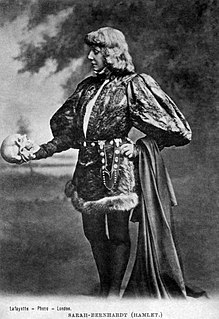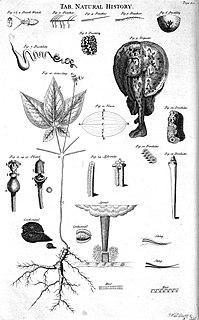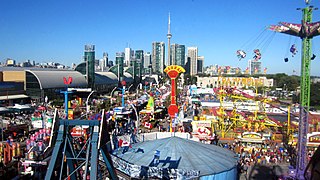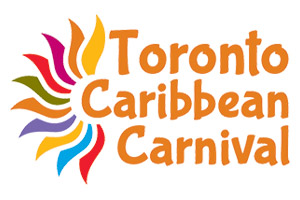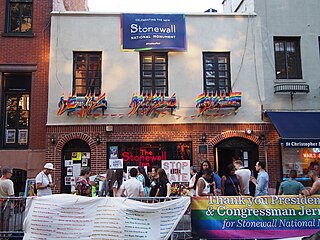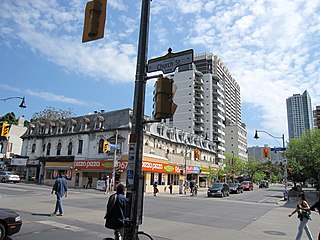
Canada has a large domestic and foreign tourism industry. The second largest country in the world, Canada's incredible geographical variety is a significant tourist attractor. Much of the country's tourism is centred in the following (busiest) regions: Toronto, Montreal, Vancouver/Whistler, Niagara Falls, Vancouver Island, Calgary/Canadian Rockies, British Columbia's Okanagan Valley, and the national capital region Ottawa. The large cities are known for their culture, diversity, as well as the many national parks and historic sites.

Summer brings many festivals to the province of Alberta. Edmonton's Fringe Festival is the world's second largest after Edinburgh's. Edmonton also hosts some of Canada's largest folk festivals, cultural festivals, and heritage days. Calgary is also home to Carifest, the second largest Caribbean festival in the nation.
Centennial College of Applied Arts and Technology is a diploma and degree granting college located in Toronto, Ontario, Canada. It is the oldest publicly funded college in Ontario. Its campuses are primarily situated in the east side of the city, particularly in Scarborough, with a new aerospace centre currently under construction at Downsview. The enabling legislation is the Ministry of Training, Colleges and Universities Act. Centennial College is recognized as one of the most culturally diverse post-secondary institutions in Ontario. Almost 100 ethno-cultural groups are represented and 80 languages are spoken on campus. In 2016, Centennial was ranked as one of Canada's Top 10 Research Colleges for the first time in its history. Its main research facilities are its Wearable, Interactive and Mobile Technologies Access Centre in Healthcare, established in 2015 through a $1.75 million federal grant. and its new aerospace innovation hub, currently under construction at the former de Havilland plant in west-end Toronto.
Numerous festivals, shows and exhibitions are held annually in Toronto. They include:

The culture of New York City is reflected in its size and ethnic diversity. Many American cultural movements first emerged in the city. The Harlem Renaissance established the African-American renaissance in the United States. Large numbers of Italian immigrants, Italian Americans, and Jews also emigrated to New York throughout the twentieth century, significantly influencing the culture and image of New York City. American modern dance developed in New York in the early 20th century. The city was the top venue for jazz in the 1940s, expressionism in the 1950s and home to hip hop, punk rock, and the Beat Generation.

The culture of London concerns the engineering, music, museums, festivals and other entertainment in London, the capital city of the United Kingdom. London is widely believed to be the culture capital of the world, although this title is disputed with a number of other cities internationally. The city is particularly renowned for its theatre quarter, and its West End theatre district has given the name to "West End theatre", the strand of mainstream professional theatre staged in the large theatres in London. London is also home to notable cultural attractions such as the British Museum, the Tate Galleries, the National Gallery, the Notting Hill Carnival and The O2.

Toronto is the largest city of Canada and its most ethnically diverse one; many immigrant cultures have brought their traditions, languages and music.
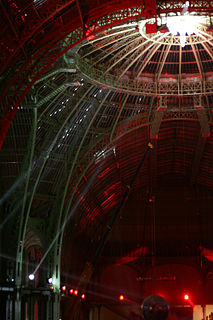
Nuit Blanche is an annual all-night or night-time arts festival of a city. A Nuit Blanche will typically have museums, private and public art galleries, and other cultural institutions open and free of charge, with the centre of the city itself being turned into a de facto art gallery, providing space for art installations, performances, themed social gatherings, and other activities.
Montreal was referred to as "Canada's Cultural Capital" by Monocle Magazine. The city is Canada's centre for French-language television productions, radio, theatre, film, multimedia and print publishing. The Quartier Latin is a neighbourhood crowded with cafés animated by this literary and musical activity. Montreal's many cultural communities have given it a distinct local culture.

Tourism in metropolitan Detroit, Michigan is a significant factor for the region's culture and for its economy, comprising nine percent of the area's two million jobs. About 15.9 million people visit Metro Detroit annually, spending an estimated $4.8 billion. Detroit is one of the largest American cities and metropolitan regions to offer casino resort hotels. Leading multi-day events throughout Metro Detroit draw crowds of hundreds of thousands to over three million people. More than fifteen million people cross the highly traveled nexus of the Ambassador Bridge and the Detroit-Windsor Tunnel annually. Detroit is at the center of an emerging Great Lakes Megalopolis. An estimated 46 million people live within a 300-mile (480 km) radius of Metro Detroit.

Aberystwyth Arts Centre is an arts centre in Wales, located on Aberystwyth University's Penglais campus. One of the largest in Wales, it comprises a theatre, concert hall, studio and cinema, as well as four gallery spaces and cafés, bars, and shops.
The culture of Paris concerns the arts, music, museums, festivals and other entertainment in Paris, the capital city of France. The city is today one of the world's leading business and cultural centers; entertainment, music, media, fashion, and the arts all contribute to its status as one of the world's major global cities.

Ontario is Canada's largest province in population and second largest province in size, covering close to one million square kilometres. It borders the United States to the south, and the provinces of Quebec to the east and Manitoba to the west. Its southernmost point, Middle Island, off Pelee Island, has the same latitude as Rome, Italy. The northernmost point at Ontario-Manitoba border is close to that of London, England, and Warsaw, Poland. Around 250,000 lakes can be found in Ontario, making up approximately one-third of the world's fresh water.

Harbourfront Centre is a key cultural organization on the waterfront of Toronto, Ontario, Canada, situated at 235 Queens Quay West. Established as a crown corporation in 1972 by the federal government to create a waterfront park, it became a non-profit organization in 1991. Funding comes from corporate sponsors, government grants, individual donors and entrepreneurial activities. Harbourfront Centre has a seating capacity of 2,000.
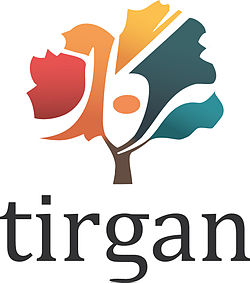
The Tirgan Festival (Persian: جشنواره تیرگان is a biennial four-day celebration of Iranian arts and culture held in Toronto, Ontario, Canada. The Festival celebrates Iranian arts and culture through an array of artistic and literary disciplines including music, dance, cinema, theatre, history, literature and visual arts.. Our festivals are held in multiple prestigious locations in Toronto, such as the Harbourfront Centre, the Distillery District, and St. Lawrence Center for the Arts. Tirgan Festival accommodates over 250 artists, 140 performances, and professional speakers.
Now known as the Peeks Toronto Caribbean Carnival, Caribana began as a one-time celebration of the Canadian Centennial in Ontario's provincial capital city. Within the first five years, 1967 to 1971, the festival aimed to share West Indian culture with the community at large, and to fund the creation of a permanent West Indian cultural centre.



